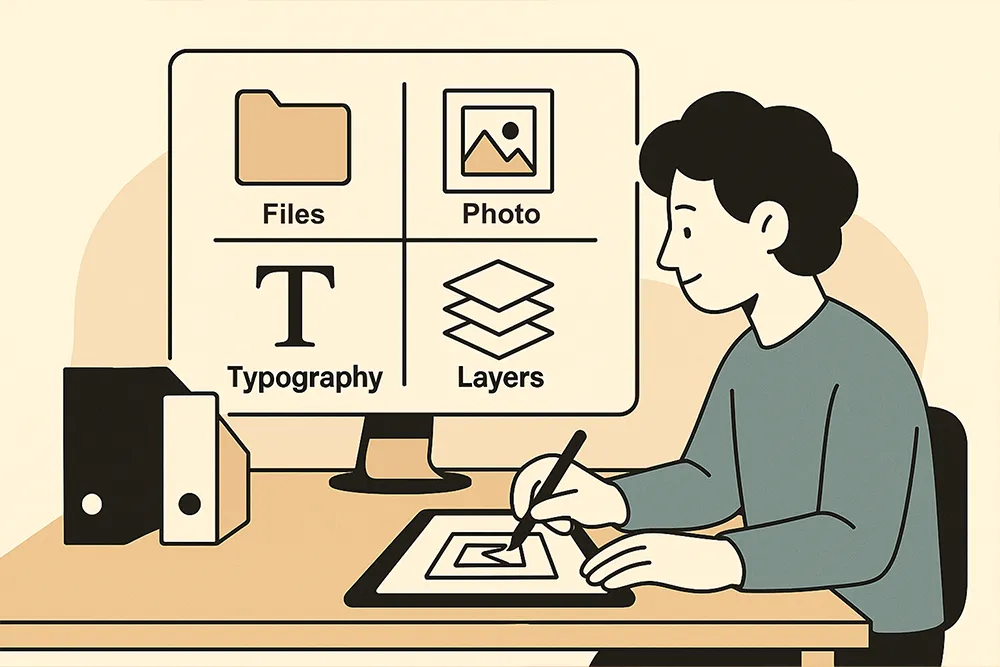Creativity can feel limitless on a good day. But as every designer knows, there are also days when even opening your design tools feels like a chore. Maybe it’s burnout, mental fatigue, or simply one of those “off” days where nothing flows. The good news? You can stay productive, even when your motivation runs low.
In this article, we’ll explore practical strategies that can help you push through low-motivation periods while maintaining your creative output. Whether you’re a freelance designer, part of an agency team, or building your own studio like Figuree Studio, these tips can help you sustain momentum—even on the tough days.

When you’re not feeling motivated, the idea of completing a big design project can be overwhelming. Instead, start with something small. This could be:
Small wins create a sense of accomplishment that can snowball into bigger achievements. Often, simply getting started is all it takes to regain creative momentum.
Not all design work requires peak creativity. Maintain a list of tasks you can do even when your energy or motivation is low. For example:
At Figuree Studio, we keep a rotation of these low-effort tasks to fill slow days productively without draining mental energy.
If you’ve designed for long enough, you know that not everything needs to be built from scratch. On low-energy days, rely on templates, reusable assets, and systems you’ve previously built:
If you don’t have a system in place yet, use your low-motivation time to start creating one. It’s productive, structured, and doesn’t demand high creative output.
Low motivation often comes with a lack of focus. One effective solution is time-boxing. Set a timer for 25 minutes (Pomodoro method), commit to one specific task, then take a 5-minute break.
This creates a sense of urgency and prevents you from overthinking. It’s easier to convince yourself to “just do 25 minutes” than to think about finishing an entire client presentation or font family.
Apps like Toggl or Focus To-Do make it easy to track your time-boxed sprints.
Design is more than just pixels. On days when motivation runs dry, take a moment to reflect on why you started. Was it the joy of creating something from nothing? Was it to run your own studio? Was it to leave a mark?
Reading testimonials from happy clients, looking back at your design journey, or even reviewing past wins can help you reconnect with your mission. Figuree Studio keeps a “Kind Words” archive of client feedback for this exact purpose.
Sometimes, productivity isn’t about willpower—it’s about changing your surroundings. If your usual desk feels like a trap, try:
Studies have shown that even slight changes in environment can stimulate creativity and improve focus. Consider pairing this with a mobile-friendly task like sketching or mind-mapping ideas.
When motivation is low, too many choices can lead to paralysis. Instead of opening every tool (Illustrator, Figma, Photoshop, Procreate), stick to just one. Limit your color palette or work in black and white.
The idea is to reduce decision fatigue and allow yourself to work within constraints—which often sparks creativity in surprising ways.
Burnout is often disguised as low motivation. If you’re constantly pushing without rest, your brain may be signaling it needs a break.
Establish a routine that includes:
Over time, routines reinforce productive habits. They take the guesswork out of your day, making it easier to operate on autopilot when motivation dips.
Isolation can drain motivation, especially for solo designers or freelancers. Joining a creative community can boost accountability and spark fresh energy.
Consider:
Even just talking through ideas with another designer can re-ignite your passion and bring new perspectives.
Finally, it’s important to recognize that some low-motivation days are necessary. They’re part of the creative cycle. Instead of forcing productivity, give yourself permission to rest—guilt-free.
Not every day has to be “on.” Rest allows your mind to reset. You may be surprised at the creative clarity that returns after even a short intentional break.
Staying productive as a designer isn’t about being in peak form every day. It’s about building a sustainable rhythm that supports your creativity long-term. By accepting that low-motivation days will happen—and planning for them—you protect your creative output while also taking care of your mental health.
At Figuree Studio, we believe that consistency matters more than intensity. The key isn’t to avoid slow days—it’s learning how to work with them.
So next time your energy dips, try one of these strategies. You may not produce your best work that day—but you’ll still make progress. And that’s what keeps your creative momentum alive.
If you enjoyed this article, check out more tips for designers on our blog, or explore our custom fonts designed to make your next creative project stand out.
 Noise Gear - Absolute Racing Font
$21 – $1,299Price range: $21 through $1,299
Noise Gear - Absolute Racing Font
$21 – $1,299Price range: $21 through $1,299 Hello Arsenio - Unique Display Font
$21 – $1,299Price range: $21 through $1,299
Hello Arsenio - Unique Display Font
$21 – $1,299Price range: $21 through $1,299 Rhinos – Street Graffiti Vector Illustration
$0
Rhinos – Street Graffiti Vector Illustration
$0
Elevate your projects with premium freebies. Fonts, graphics, and templates handpicked for creators like you — download them all today, free forever.
Download Freebies